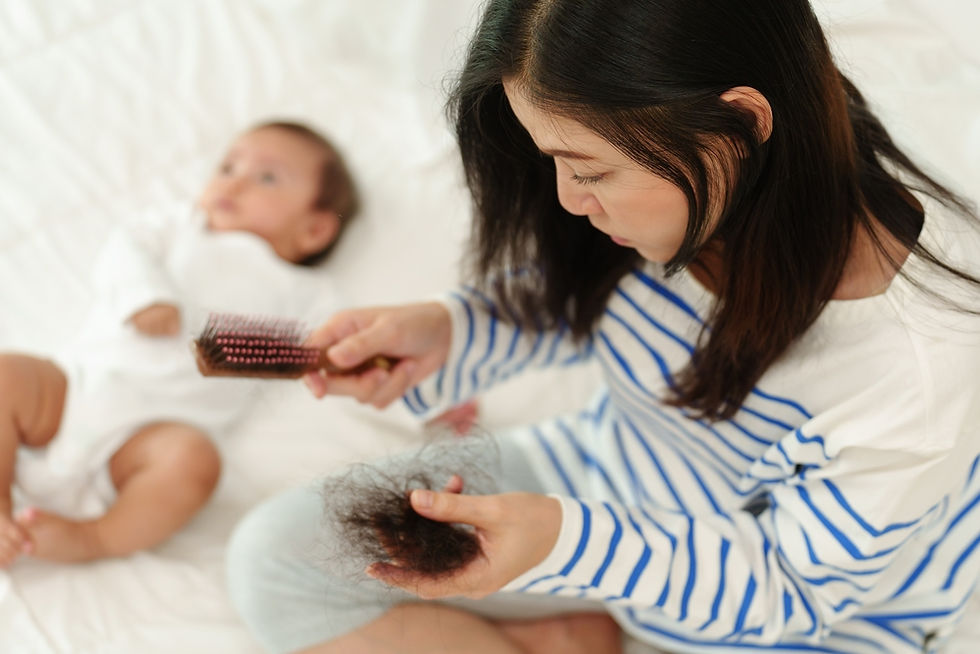The Truth About Postpartum Hair Loss and Skin Changes
- MedWords Editorial

- Jul 28
- 2 min read
Updated: Jul 29

You’ve brought a baby into the world, and while that’s beautiful, your body feels different. One of the biggest surprises for many new moms? Hair shedding and sudden skin changes that can hit weeks or months after delivery. If you’ve noticed more hair on your pillow or unexpected breakouts, you’re far from alone. Here’s what’s happening to your body and how to manage it without stressing out.
Why Postpartum Hair Loss Happens
During pregnancy, high levels of estrogen keep hair in its growth phase longer, making it look fuller and shinier. But after birth, estrogen levels drop, and all those “extra” hairs enter the shedding phase at once. This typically:
• Starts around 2–4 months postpartum
• Peaks between 4–6 months
• Often returns to normal by your baby’s first birthday
This isn’t permanent hair loss, it’s temporary and completely natural.
How to Manage Postpartum Hair Shedding
• Gentle hair care: Use a soft brush and avoid tight hairstyles that pull on roots.
• Nourishing shampoo: Choose volumizing or strengthening formulas with biotin or keratin.
• Balanced diet: Protein, iron, and omega-3s help support regrowth.
• Scalp massages: Stimulate blood flow to hair follicles for healthier growth.
• Avoid harsh treatments: Skip chemical dyes and heat styling in early months.
Postpartum Skin Changes You Might Notice
Alongside hair shedding, your skin may feel different:
• Dryness or oiliness: Hormonal fluctuations can change your skin type.
• Acne flare-ups: Common in early postpartum due to hormonal shifts.
• Melasma (skin pigmentation): Dark patches that developed during pregnancy may fade slowly.
• Stretch marks: Natural result of pregnancy stretching over time, they lighten.
Caring for Postpartum Skin
• Stick to gentle, fragrance-free cleansers to avoid irritation.
• Moisturize daily with nutrient-rich creams (look for vitamin E or hyaluronic acid).
• Wear sunscreen to protect against pigmentation.
• For breakouts, use safe postpartum products like salicylic acid or consult a dermatologist if breastfeeding.
When to See a Doctor
• If hair loss is severe or patchy beyond a year postpartum
• If skin changes include painful rashes, excessive itching, or unexplained spots
Bottom Line
Postpartum hair loss and skin changes are completely normal and temporary. With the right care, nutrition, and patience, your hair and skin typically return to their pre-pregnancy state. Remember, your body just did something incredible, give it the time and kindness it deserves.
Comments